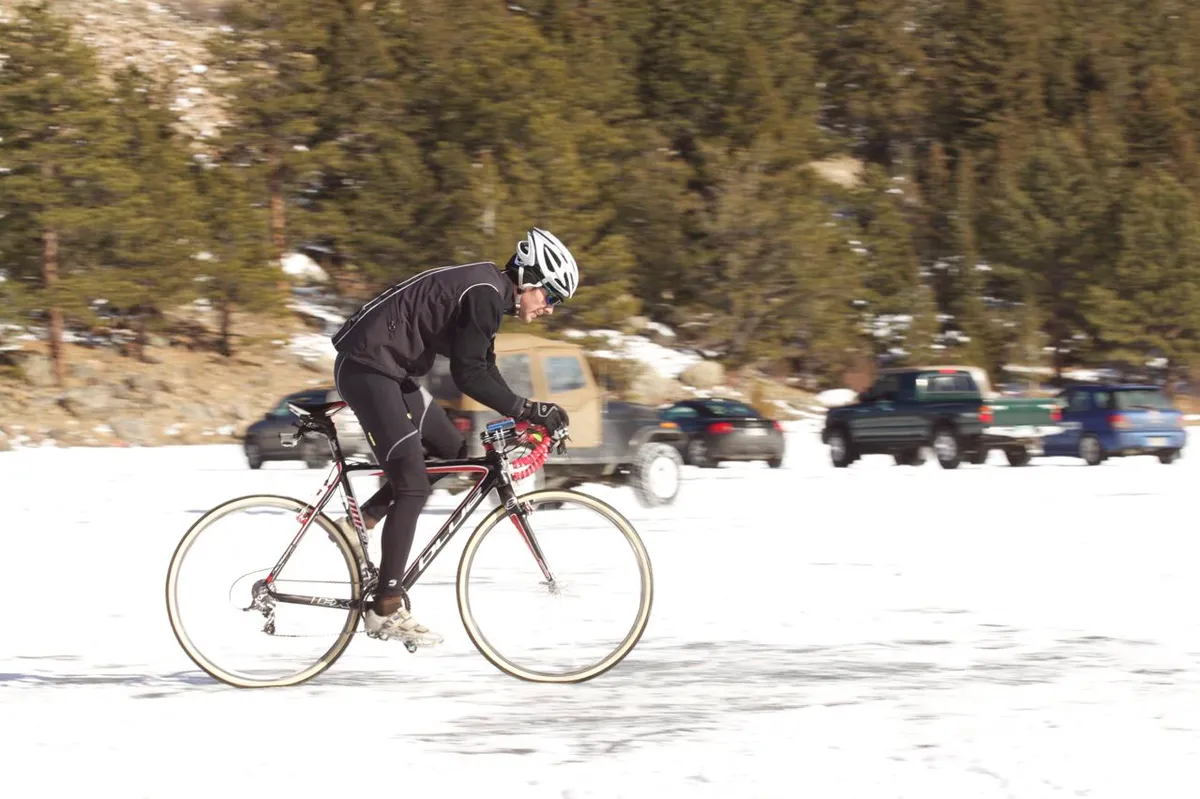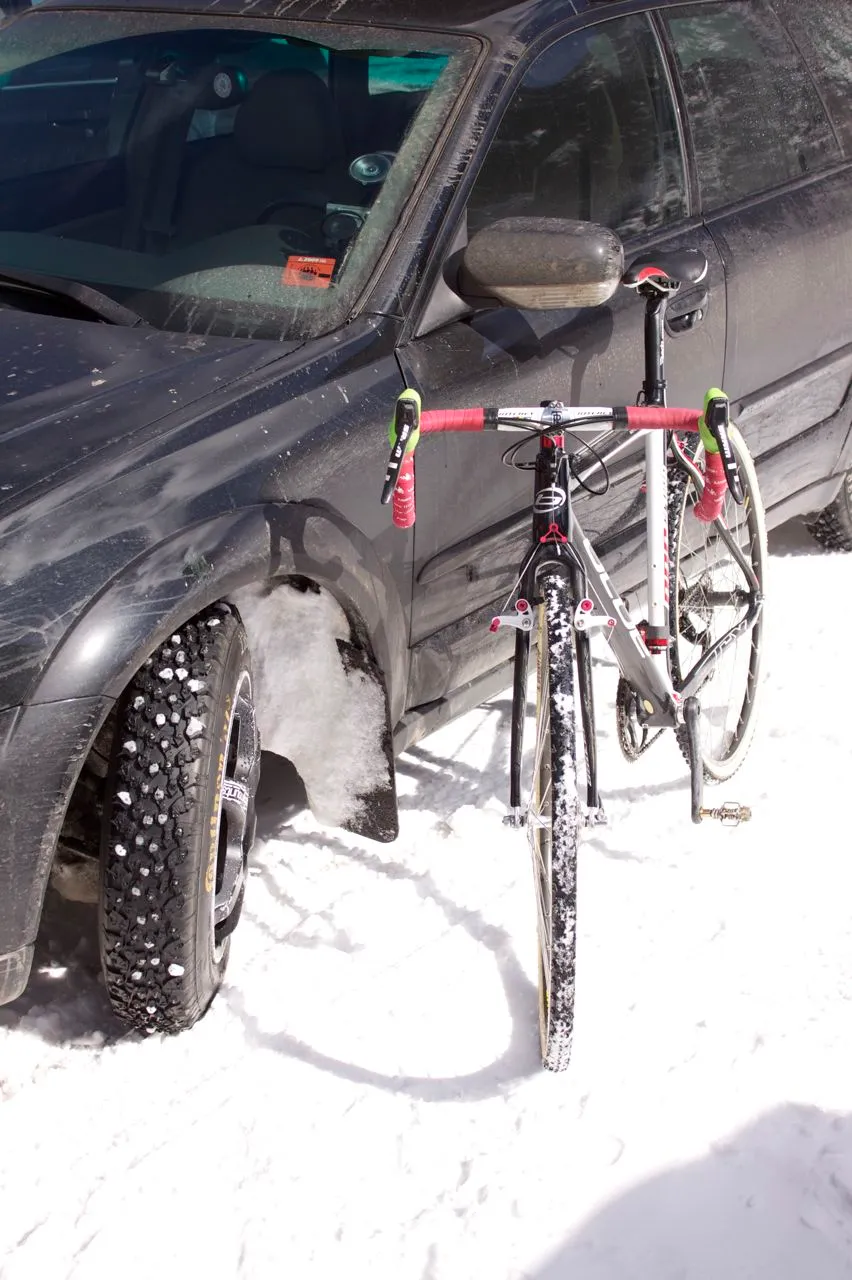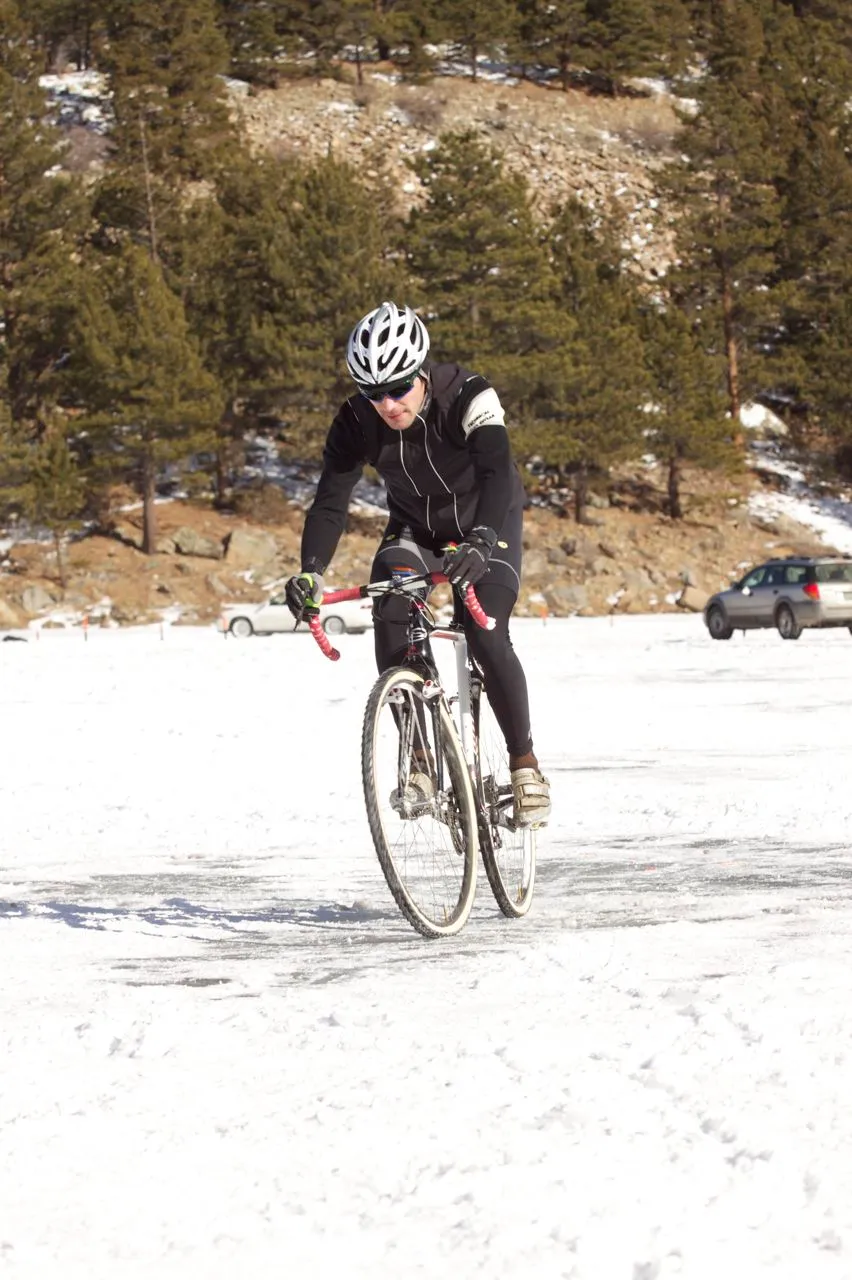Dugast’s Diavolo studded tyre is barely two months old, yet it's one of the hottest products in US cyclo-cross. It was created for pros, promptly banned by the UCI and now for sale to you and me.
Dugast are manufacturing the tyres at the special request of customers at a price of US$225/€160 each, but aren’t planning to stock a certain quantity. If you want a pair for next season, order them this summer.
BikeRadar received the first set of Diavolos to leave Dugast’s circle of professional riders and carried out an exclusive test at Georgetown Lake in Georgetown, Colorado, where the ice is up to 27in deep – thick enough for 4x4 ice racing.
Our day on the frozen lake – which was unfortunately covered with 6in of snow the night before our test – paired with some snowy trail rides gave a good idea of what these exclusive tyres are capable of.
How it’s made
The Diavolo is made by punching holes in the side knobs of Dugast’s Rhino tread and inserting 174 small spikes, before gluing it to a standard cotton casing. It’s a simple but tedious process and Richard Nieuwhuis, the brand’s proprietor, says it takes six hours to manufacture a single tyre, which is how he justifies the extraordinary price.
The spikes are sandwiched between the tread and casing without any other sort of adhesive which, according to Nieuwhuis, allows them to move in and out of the tread. However, this is imperceptible to the touch.
The spikes add roughly 130g to a standard 32mm Rhino, as measured before glue or sidewall sealant is applied; each of our Diavolo test tyres weighed 485g. They're incredibly sharp. So sharp, in fact, that we had to use leather work gloves to mount the tyres.
On one hand, we can see why the UCI banned the tyre: its spikes, though short, would cut a rider if they were to fall on them. On the other hand, any cut would be superficial and we imagine the traction could keep a rider off the ground and thus prevent injury.
On test
Excited to get on the ice, our first introduction to the Diavolo was in plain clothes and without helmet. Let that be a lesson, as we promptly laid ourselves out flat. The issue which resulted in the fall was too much pressure. We were in the high 20s (psi) and after reducing it to 20psi (1.3 bar) the tyre's grip greatly improved.
Watch the video now:
Unable to load media
“On ice you need to be sure to run low tyre pressure,” said Nieuwhuis. “Low pressure means something between 1.2 bar and 1.4. If you go outside 1.4 the tyre stays too round and the edges with the pins don’t grab the ice. At the world championships in Tabor, there were already a lot of people riding at 1.2.”
Make no mistake, while the Diavolo gives great advantage it will not transform a mid-pack category citizen racer into Sven Nys. What it does, however, is give you the opportunity of traction in situations where there would otherwise be none.
On a scale of one to 10, with one being plain rubber on ice and zero traction, and 10 being the traction available on a dry road, we estimate that the Diavolo brings you to a six on glare ice, a surface that would be otherwise impossible to ride on.
“This tyre was not made to give you extra grip with your bike at a 90-degree angle,” said Nieuwhuis. “If you make a tyre that has lots of extra grip in that position you’re going to have an issue where your rolling resistance will be dramatically increased to where the benefit of this product would be none.”
Cyclo-cross races are never run on flat frozen lakes, but this type of test and Dugast’s own ice rink test with Sven Nys gives an idea of what the tyre is capable of. It’s also easy to relate to since we all know the feeling of trying to ride across a patch of ice on standard tyres and how quickly the bike can go out from under you.
On a snow and ice covered trail, the Diavolo inspires confidence not possible with a standard tyre. You can rip icy off-cambers and in this scenario the Diavolo is a game changer. We have no doubt, if it had been allowed, at the world championships in Tabor it would have carried the winner.
Interestingly, on dry tarmac the Diavolo rides pretty much like a standard Rhino, save for a little more noise. It squirms a little, but we’ve ridden ’cross tyres that are sketchier when cornering hard. The Diavolo’s reasonable performance on road is possibly due to the claimed ability of the spikes to move further into the tread knobs and allow the rubber to grip the tarmac.
The advantage is a tread that has more grip on ice than any other available affixed to a tubular casing that is capable of pressures in the teens. The disadvantage of this tyre is the same as all Dugast tyres: they require diligent maintenance and careful handling to prolong service life. If you're is careless in a wet climate the cotton casing will rot in a month.
Banned, so why bother?
UCI rules are for UCI competition. Do you race in UCI sanctioned races? Well then, you’re out of luck when it comes to studded tyres, but if you aren’t competing in UCI ruled races, why not gain the advantage? It’s like the 6.8kg bike weight rule, or the much-debated aero rules – for the most part, they don’t apply to us amateurs.
In the US, despite the UCI ban, the tyres fall into a grey area that renders them legal in non-UCI sanctioned USA Cycling events as well as events sanctioned by regional governing bodies. “For domestic races [non-UCI and non-national championship] we have no problem with studded tyres,” said Shawn Farrell, USA Cycling’s technical director. “It’s only the UCI that’s against it.”







